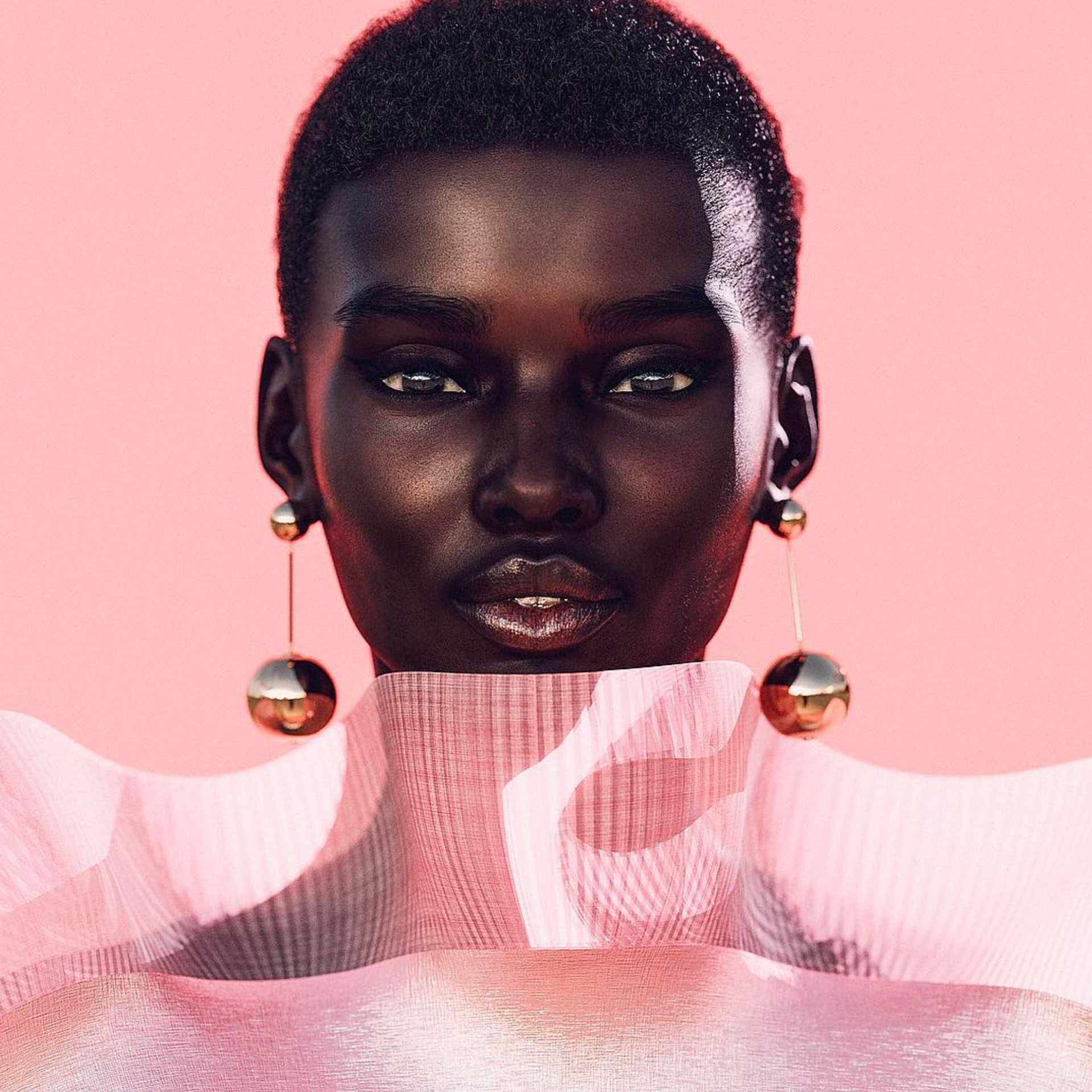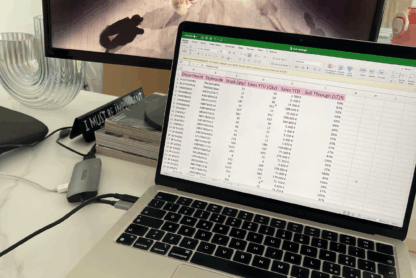“This is a moment that requires seriousness, a moment when one should think and reflect. What do we do? What is fashion for? What are we here for? What can fashion contribute to a community?” Miuccia Prada stated after the video presentation of the “Multiple-Views SS21”-Collection.
The arrival of Covid-19 did not only trigger a re-thinking and awareness on socio-economical topics but forced various industries to reflect on their market strategies. With physical fashion presentations and events not being maintainable due to a rising number in cases, Houses had to become inventive and make use of tools the digital age provides us with. We have seen Maisons’ such as Maison Margiela, Loewe or Balmain set brilliant examples for the direction the fashion industry started to head towards around June 2020.
Maison Margiela broadcasted its Artisanal Co-ed show on a variety of channels. Instead of introducing the collection through a runway show, Galliano created a short film in collaboration with Nick Knight, which captured the models via a thermal imaging camera.
Under the Creative Direction of Jonathan Anderson, Loewe’s SS21 was unveiled in the form of ‘The Show in a Box’ concept. Selected fashion folks got the box delivered to their doorstep. In it: a collection of the season’s silhouettes and accessories in the appearance of cardboard cut-outs, as well as utensils that allowed the recipients to re-construct a miniature version of a fashion show.
Balmain broadcasted its show on all socials. The models and Olivier Rousteing walked the show on a boat floating over the river Seine during night time, not only underlining the glamourous character of Balmain but furthermore capturing the capital’s beauty – seamlessly unbothered of what is happening around us.
However, statistics show the impact the pandemic has had on the apparel industry since the beginning of this year. In Europe’s clothing sector, compared to the same period in 2019, production fell by 37.4 per cent in the period between April to June 2020, when global coronavirus cases reached a peak. Retail sales of clothing products saw the most dramatic decline, with 43.5 per cent of drop in sales. E-commerce and online shopping saw an increase in interest. U.S. online sales for September increased 43% year over year, reaching $60.4 billion, according to Adobe Analytics.
A shift in priorities and demand requires a quick adaption and mindfulness when thinking about the future. Will it be as safe to work towards the position of a store/retail manager at the moment, when the existence of many physical posts is uncertain? But what are positions that are and will continuously be highly requested in the fashion field?
We have listed a selection of jobs you cannot go wrong with right now:
E-Commerce Manager
At the beginning of 2020, when people were broadly forced into isolation not authorized to continue with their regular day-to-day rhythms, many slowly mutated into shopping hermits. The utilization of the comfortable tool ‘online shopping’ to quench lusts resulted in a 24-25% increase in online purchases in countries such as Germany or the UK as of May 31.
With more numerous people using brands’ online presences, jobs like customer service advisor or e-commerce manager became increasingly prominent. But what does an E-commerce manager do?
E-commerce Managers develop and execute online marketing strategies for companies and organizations to maximize their online presence’s potential. They are involved with companies’ advertising and content factors and accountable for the e-commerce division and report of actions to the company’s management. The position requires an up-to-date awareness of online marketing and the fashion industry environment, to ideally serve the interests of the business and customers. General duties furthermore include website management, market research, budgeting, interviewing and training recruits, or supervising the e-commerce division.
Corporate Social Responsibility
Nowadays, there is no need to discuss whether or not brands and companies have to implement fair ethics and sustainable strategies to invade the fashion market. With a rising interest in companies supply chains and product histories, the same have to operate precisely and remain transparent in their actions. Where has their product been made? Have the materials been ecologically sourced? What technologies were utilized to produce the item? By providing shoppers with answers to their questions and intensifying the expansion of sustainable technologies within the companies, brands became increasingly comprehensible and truthfully. «In the times of a crisis like Covid-19, trends and the awareness of topics such as equality and human rights are being exhilarated. Consumers of luxury goods are not paying attention to the good itself but focus on the engagement beyond the product. Millennials and the Gen Z demand brands to participate in the Zeitgeist. They are building the future and want luxury brands to provide their voice», explains D’Arpizio, partner at Bain & Company in a digital event hosted with Bvlgari earlier this year.
Positions such as these of a Corporate Social Responsibility manager have furthermore strengthened companies’ sustainable image and ensured the consistency of the consciousness aspect at various firms. A CSR assembles strategies aligning with sustainable demands and regulation and integrates social and environmental goals into business operations. This function requires an assemblage of skills. The fashion industry has to be understood to the bone, and the expertise in a range of social, environmental and governance issues and global affairs internalized.
Data Analyst
“Consulting firm BCG has revised its initial estimates and expects a drop in luxury sales between $85 and $120 billion in 2020, up from its first $40 billion forecast” states Vogue Business. After three months of lockdown, 80 percent of fashion businesses based in Europe and the US faced financial distress, according to The Business of Fashion and McKinsey & Company’s The State of Fashion 2020: Coronavirus Update.
Companies find themselves confronted with the challenge to find answers to questions on what their future will look like and how the pandemic has impacted sales and purchasing behaviour on the long-run? Should one invest in the development of e-commerce? What are strategies to maintain, if one would be pushed into a second lockdown? This uncertainty implies that companies have to build their upcoming actions on risk-averseness and market predictions. Technology is reinventing the store and reimagining the customer experience. Experts encourage retailers to focus on enhancing their existing platforms and to shift their mindsets to customer behaviour.
The job of a Data editor/ analyst serves as tool to help analyse the customer and purchasing information and maximise its potential – Data can benefit retailers sharpen their marketing strategies and generate new products that are expected to land with customers. Furthermore, offer and products can be altered to the user’s needs and interests. The position contributes to a company’s expansion and requires and understanding of analytics, numbers and management. It is a role for those who want to have a large impact while remain in the background.
Social Media Community Manager
With the growing attention on the digital market presence of brands during the pandemic, the same have to stock up on their digital staff and refine their social tactics. One of the probably highest requested jobs in the digital fashion sphere at the moment is the role of a community manager. The difference characterizing the position of a social media manager and community manager is the aspect of the strategy. While the community manager personally engages with the community and enlists as well as nurtures new customers, triggering conversations through unique content (almost like a brand ambassador), the social media manager controls the behind the scenes, hand in hand with social media strategists, figuring out strategies to maximize the posts’ social engagement through curated content, sourcing and scheduling.
However, the roles are overlaying, as each position presumes a profound understanding of the marketing and communication niche, and digital networking skill. Both jobs share the responsibility to generate valuable content, aligning with the company demands and tone while effectively attracting the consumer. Meaning, if you consider yourself intrigued by this job niche, you would be well advised to meet the following requirements, as they are likely to come up in each field.
1. You should be smart and capable of interacting with people online in a professional yet personal manner and understand the importance of gaining a customer’s trust.
2. Communication and writing abilities are fundamental, as you will be producing social content that should grow the community while residing professional and not to advert-like.
CGI Artist
Computer-generated imagery is the creation of still and moving images and visual effects using computer hardware and software.
When the pandemic forced people into isolation and regulations such as social-distancing were emplaced, the CGI technique – that has been on the market for a while, often used for advertisements, short films and editorials – became a highly demanded tool. Vogue Italia or Office Magazine published CGI Editorials to continuously serve innovation during a time, in which people fought with the lack of inspiration and physical, social contact.
“There’s a lot of freedom… 3D rendering gives you an advantage in terms of creating images that would be much harder to do in real life if you are only relying on a camera,” says 3d designer Rodolfo Hernández, whose work was featured in the digital July issue of Paper magazine.
What is interesting about the CGI job niche is the diverse facets that come with it. The role of a CGI artist requires a profound understanding of digital rendering as much as a creative vision. CGI Editorials serve as augmented reality, lightning and shadows, creases and fabrics have to assemble a realistic image composition. A CGI artist is likely to work on extensive projects for big fashion houses and magazines or operate independently on projects and artwork for exhibitions or private sales. It is a position of the present and future, bringing newness, innovation and safety to the world of fashion editorials.
Words Lilly Meuser
Image source Shudu Gram : the world’s first digital supermodel







